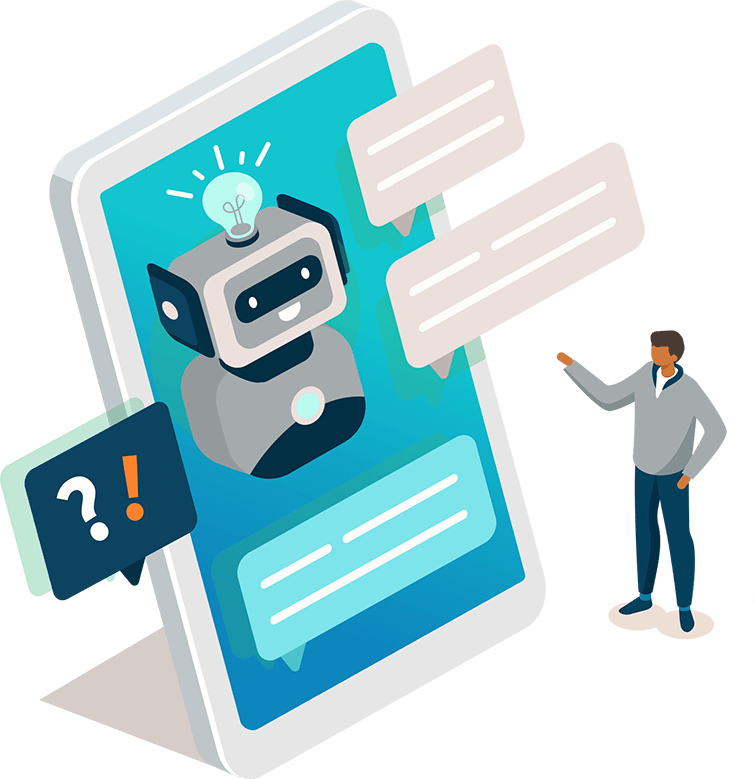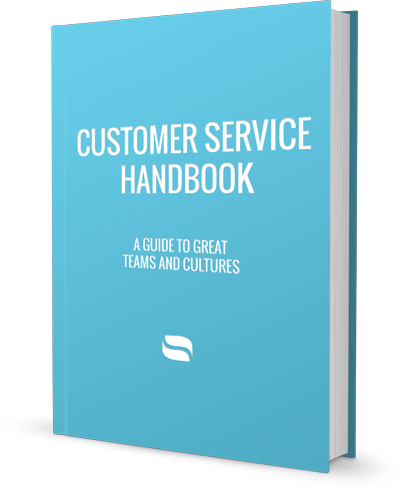







Expectations
This is a part of a continuing series that is also available as a downloadable eBook here. We talked to 35 companies, including Stripe, Twilio, and Mailgun, to get a sense of what it takes to run a great customer support organization. While every company is different, there were some trends that we could identify as benchmarks for great customer support.
As The CEO
Building a customer support culture that is not only accountable and transparent but also personable and approachable begins at the top. Founders and co-founders need to be great at supporting customers. You're not expected to spend all day conversing with customers but you should make it a habit to hang out with customers and to learn about their anguishes, satisfactions, and discontents.
Taylor @ Mailgun
"I think the best way we align customer support with our philosophy is that everyone take turns at support so we can all identify with the customer. It's definitely not operationally efficient to have our senior developers on support chat but customers really appreciate it and it gives developers a good perspective as well."
Customers can see and feel this while your team will understand and appreciate this. You need to lead by example and continue to set examples even when you're too busy to care. Remember that culture is just a set of commitments. Once you've decided on what sacrifices you're willing to make in exchange for certain outcomes, rewards will come naturally.
Courtney @ Eventbrite
"The customer-oriented culture has always been here at Eventbrite. Providing support is not just about answering calls and emails; it's about engaging on a deeply human level, problem solving, and cultivating the quality of our marketplace to propel the business forward. Everyone in the company plays a part in offering that support. We have a weekly all-hands team meeting, during which, members from other departments volunteer to answer calls while we're away. This is exciting because it gets the people who build the product in an environment where they can directly witness the value they've added to the customer experience. Inspiration comes from the top too. Since Day 1, our CEO and President have put the utmost priority on support. If there was any need for fueling motivation, it comes from seeing them volunteer to answer calls."
Musical Chairs
Speaking of spending time with customers, everyone should do it. At our previous startup, everyone did customer support. Every new hire, whether biz-dev, sales, pm, or engineering, spent time "manning the ship". The idea that the company's identity and success was crucially dependent on a ship well steered fused together a strong customer-centric culture.
By understanding the full gamut of customer feedback, questions, frustrations, and satisfactions, any employee should be able to apply their core skill set(s) to at least one of those areas. Other startups we've hung out with tell us that customer support is one of the most crucial hinges that connect the outward facing side of the company to the inward facing nature of running a business.
There's nothing more important than aligning everyone's interests and expectations early on. In small-team settings, do your best to build in a rotation system where every member spends 30 minutes to an hour every week (or any set interval without becoming overbearing) answering customer emails and triaging requests. The goal isn't to turn every member into a support superstar but to give everyone a solid birds-eye-view of the land for how customers are reacting to the business and to instill a deeper sense of appreciation for the value a business is delivering to customers. Avoid outsourcing customer support to a single team, or worse, to a third party. Everyone in your company needs to know what makes customers tick. It's also not uncommon for team members from other departments to draw inspirations from meaningful customer conversations.
Michael @ Stripe
"Aside from the seven of us who work full-time on support, there's also a rotation that involves the other Stripes. The goal here is to make sure that each and every one of us are interacting with our users and continuing to bring fresh ideas; it's one way we learn how to make Stripe better for everyone. The rotation itself isn't our final form, but it's what we've found effective so far. We are planning to continue experimenting with this to find the best way to help everyone at Stripe bring their talents to a user-facing interaction."
Here at Reamaze, customer support is still handled by the founders and engineers. We'd like to keep this tradtion for as long as possible. We treat each customer conversation as a unique way for us to learn about that customer, to build on that relationship, and to learn something about ourselves. As much as we like data and analytics, they're nowhere near as effective as hearing about something directly from customers.
Courtney @ Eventbrite
"As a client services team member at Eventbrite, you're an advocate for customers, you're a product expert, you're troubleshooting technical issues, and you're also sharing best practices. There are so many facets to this job. Transparency is key for connecting with clients, and it ensures that we're setting clear expectations within our conversations. If someone contacts us looking for a tool we don't offer, we won't fabricate a false promise; instead, we'll brainstorm immediate workaround solutions and record the feature request. And by tracking the request, it gives that idea a chance to be included in future product improvement recommendations we make."
Train To Liberate
To have everyone on a level where they can operate effectively on a customer support team you'll need a hit-the-ground-running style training program. While some companies choose a strict regiment with lots of classroom instruction, simulations, and repetitious tasks, others choose to fully immerse new members and pair a mentor to them for assistance-based training. The possibilities are endless.
Jason @ Twilio
"We have a lot of working side-by-side with new trainees, vetting the answers before they actually go to customers, a lot of collaboration, and a lot of co-piloting and oversight. After they do it for 2-3 weeks with the comfort level, then we take the training wheels off. Prior to that, we have them shadow someone more seasoned. They might write up the answers but we always have a more experienced person edit their replies."
The path you choose will depend on what everyone on your team is comfortable with. Everything from the size of your team to the service you're providing will affect how efficient your training program will be. A basic framework to follow (no specific order):
- Treat customer support as a central training hub for all new hires regardless of role.
- Determine an optimal length of time where any new hire must spend in customer support (and nowhere else) to learn the in-and-outs of a product/service and the customers it influences. The goal is to help new hires focus on why they're there, why they're building something, and the value they're adding.
- Building a successful business means long customer/user lifecycles. This lifecycle is (and should be) naturally longer than your support staffs' lifecycles. It's important to recognize churn rates in customer support departments as a natural order of things and prepare training strategies to cope with changing team compositions and to avoid downtime.
- Balance your training program with hard skills and soft skills. Hard skills include things such as learning a new technology or learning how to reproduce a simple bug. Soft skills include email composition, tone consistency, or phone etiquette.
- Mix up your training program to expose new hires to a wide variety of contexts. Email training, classroom training, sit-ins, and mock trials are just a few ways you can get someone on-boarded.
- Become habitual facilitators by importing and exporting customer feedback proactively. Make this an important part of your training routine.
- Cut down on unnecessary internal team meetings. Instead, attend other teams' meetings in pairs and share interesting thoughts and findings. This is a far more efficient use of your team's time.
- Train new hires to take an active role in becoming a cultural hub of the company. Because everyone passes through your customer support boot camp, you have unparalleled advantage in being the cultural glue where new and seasoned staff can connect, reconnect, and mingle. The customer support team is bound to be the most popular team!
We want to emphasize the need to take "training" out of its natural habitat and experimenting with it. Traditional training means entrenching someone in your mode of thought. "Training to liberate" allows your staff to create opportunities for self thought, self discipline, and self actualization – a much more liberating way of operating at maximum efficiency without arbitrary constraints.
Christie @ Outright
"I like to tell my team what I want the end result to be and give them the freedom to figure out how to get there. I give guidelines and goals but not rules and steps."
Cross Fertilize
Cross fertilization in business terms is the increase in interdependency and economic value among different bodies of knowledge in products and technologies. It may also mean the mixing of ideas and customs of different groups of people in order to make things better for all. Building a culture where customer support isn't just a separate team babysitting complaining customers but a core business function facilitating teamwork, knowledge transfer, and culture among all departments is the foundation of success.
Jason @ Twilio
"We do share communication with our sales team. If we see a customer that we should reach out to in order to sell them a service, or if we want to help them learn more about our business, or give them a demo, or sell them into something else, we'll share that responsibility with our sales team.
Customer support is also well adapted to the trickle-down effect. A new direction voiced by the CEO can lead to shifts in priorities. This may lead to product or service changes which ultimately affect customers. Customer support is therefore at the receiving end of how changes are reflected back. A culture where other team members are well acquainted with customer support, and customers themselves, can positively affect how decisions are propagated.
Be sure to also cross-train current customer support staff with other departments in the company that they have an active interest in. The goal is to encourage discovery and exploration. By allowing your customer support staff to explore, you're not only excavating their innate interests, and perhaps making them more proficient team players, you're also earning your company extra returns on a hire with the possibility of internal transfers (re-hiring from within).
Lauren @ Twice
"We have plans underway for an internal cross-training program to give every employee an opportunity to expand their knowledge of each department at Twice--from customer support to operations and marketing. Once we get this rolling, we plan on having every new hire learn the ropes in each departmental role. The more we all understand how each functional team affects the rest of the business, the better off we all are as a cohesive team. One wrong garment measurement could not only result in one more customer service email but also one more return, which in turn costs the company additional time and money."
Instilling Belief
Having a great customer support team demonstrates confidence in your product. And having that level of faith in the product or service you're building, the value you're providing, and the thousands of customers you're helping can be enough motivation to do an outstanding job every day. Promote this by empowering your staff with enough authority and flexibility to make certain decisions that will help customers without having to go through supervisor after supervisor. Determine what that authority and flexibility might be and stick to it.
Being confident with your product and service instills confidence in your customers as well. Their belief in your product or solution heavily depends on whether or not they can feel you in their shoes. Being confident means you're willing to:
- Back up your promises.
- Be accountable and transparent with your features, services, policies, prices, etc.
- Be there whenever customers need you.
- Be honest even if it might cost you a customer.
- Recommend competitor products or services when it's a better fit for a customer.
- Go the extra mile to help someone out even if it's not part of the job description.
Christie @ Outright
"We're willing to help customers on all fronts because we genuinely believe that Outright is a great product. It's able to help them be better at their business. We back that up by being available all the time. We're not hiding behind any responsibilities. We also give our customers honest advice. If Outright isn't the best fit for them, we'll tell them that and even recommend alternatives. That honesty goes a long and customers understand that they can believe us."
Trust
Transparency is the standard unit for trust. And to value the trust bestowed upon you by customers, you must understand the difficulty in earning trust over many years and many lifecycles. In times of urgency, your customer support transparency track record can make or break you.
Lauren @ Twice
"The biggest advantage to having great customer support is that it adds an extra layer of trust, comfort, and ease that makes a customer want to come back. They'll remember how easy it was to make a return or to change their shipping address, and they'll shop with you because they trust that you'll continue to create pleasant experiences for them."
Be as welcoming as possible to opportunities to show customers that you're not hiding or hiding behind anything. For example, here is an email we sent to customers when we botched something: "We wanted to let you know that we performed a small migration this morning due a bug in our database found late last night. The downtime happened around 3:15 AM Pacific Time and lasted roughly 20-25 minutes. The fix has been issued and all services are restored. Your account should not be affected but we wanted to let you know just in case you notice something funny. If you do, please get in touch with us right away."
Don't be afraid of owning up to your teams' mistakes. Be proactive about apologies, reach out to customers so they can sense the extra effort you've put in to set things right, and make them remember that you genuinely care about how they feel. Eating the $10 apology card, the $20 replacement, or the $30 shipping cost is far better than losing a customer.
Chapters
How's your customer support?
We build brilliant customer support software for companies like yours.
Stop wrestling with ticket numbers and start delighting customers with Reamaze, our cloud helpdesk.
We wrote the book on Customer Support
Literally.
Our book includes interviews with some of the top customer support organizations in the industry and shows you what it takes to deliver consistent, high-level support, whether you're a one person startup or a Fortune 500 enterprise.

Get our eBook under "Official Downloads"
Join thousands of teams using Reamaze to impress customers.
Find out how with a free account.
